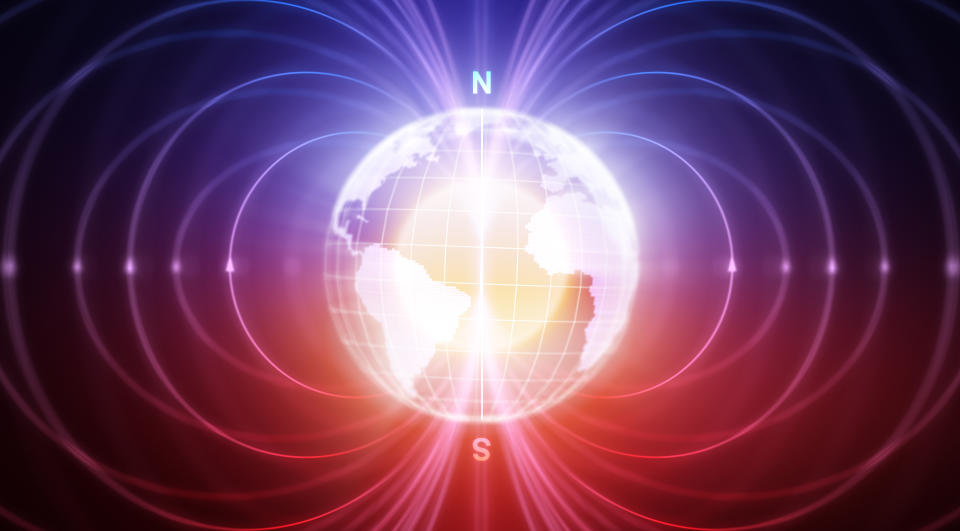Earth’s magnetic north pole is on the move and scientists might now know why
Earth’s magnetic north pole is on the move, but scientists might finally know why it’s racing towards Siberia.
The magnetic north pole as been moving up to 34 miles a year for years, crossing the international date line in 2017 on a journey towards Russia.
But researchers from the UK and Denmark now believe they might have worked out why – and it’s due to two writhing blobs of magnetism under Earth’s surface, one in Canada, the other in Siberia, Popular Mechanics reported.
Earth’s magnetic field is generated by iron in the liquid outer core of our planet, where a hot ocean of iron and nickel flows.

Read more: Scientists are having to update maps because the North pole is moving
The researchers wrote: “The wandering of Earth’s north magnetic pole, the location where the magnetic field points vertically downwards, has long been a topic of scientific fascination.”
Researchers analysed 20 years of satellite data to track the movement of the pole.
Since the 1990s, the movement has quadrupled in speed, the researchers said, as reported by Science Alert.
“Over the last two decades the position of the north magnetic pole has been largely determined by two large-scale lobes of negative magnetic flux on the core–mantle boundary under Canada and Siberia.”
The scientists said that the flow of magnetic material changed between 1970 and 1999, and a magnetic blob beneath Canada elongated, splitting in two.
Read more: Earth’s magnetic poles show signs they’re about to flip
Part of this ‘blob’ shifted towards Siberia, causing the magnetic pole to move in that direction, they said.
Researcher Philip Livermore, of the University of Leeds, told Radio 4: “Now historically, the Canadian patch has been winning the war and that’s why the pole has been centred over Canada.
"But in the last few decades, the Canadian patch has weakened and the Siberian patch has strengthened slightly, and that explains why the pole has suddenly accelerated away from its historical position”
Livermore added: “Our predictions are that the pole will continue to move towards Siberia, but forecasting the future is challenging and we cannot be sure.”
Watch the latest videos from Yahoo UK

 Yahoo News
Yahoo News 
